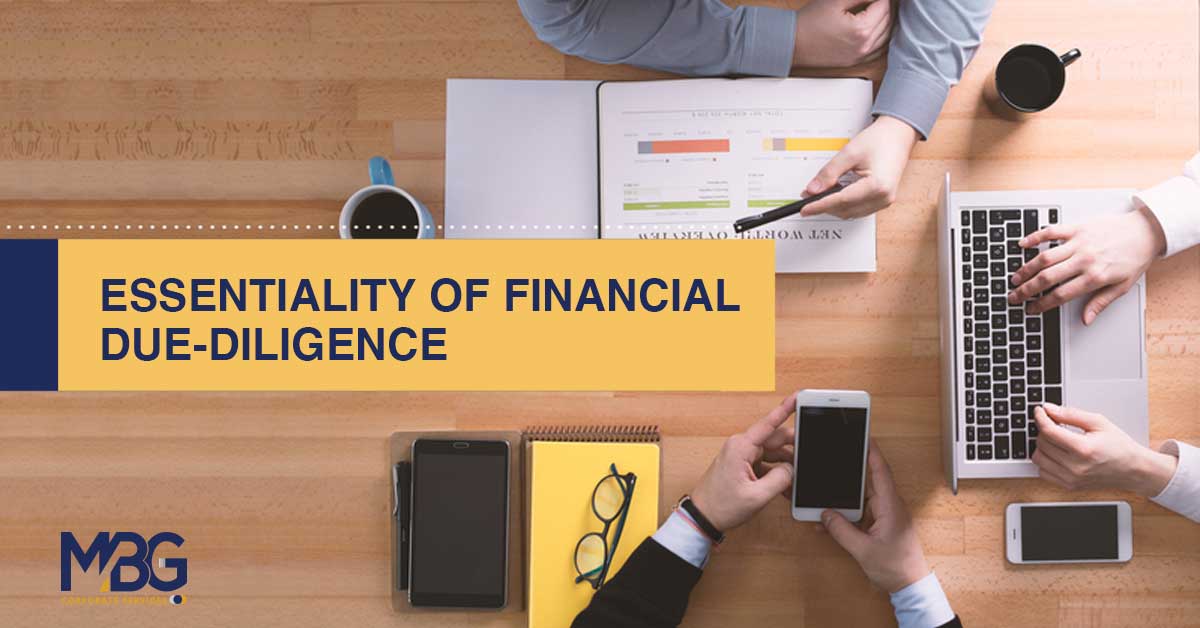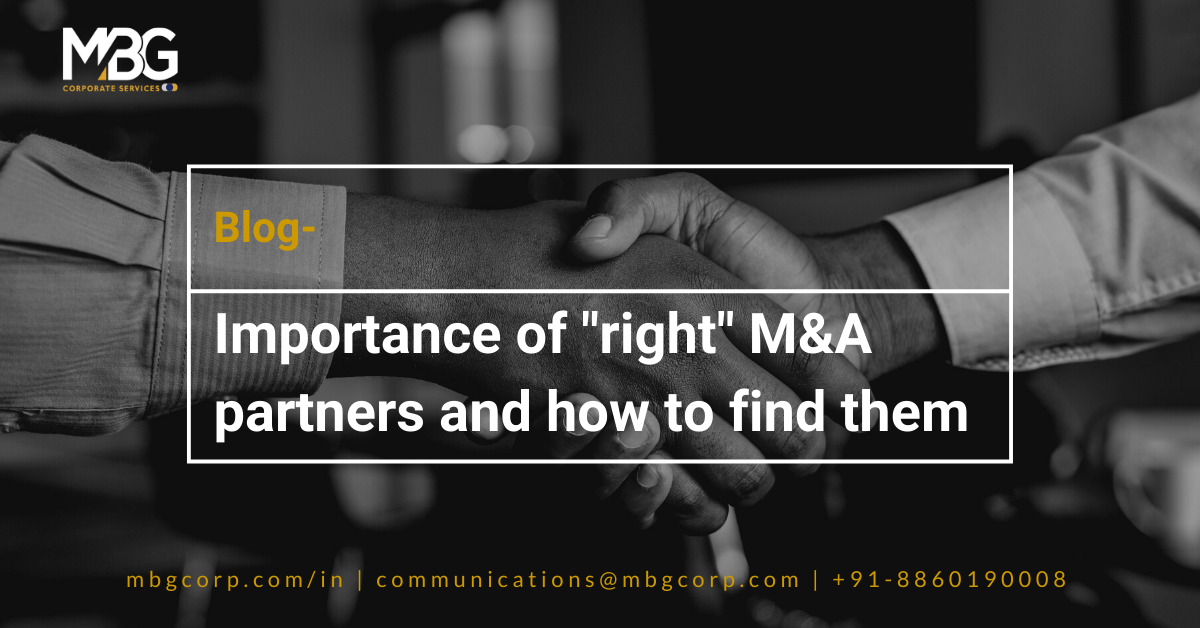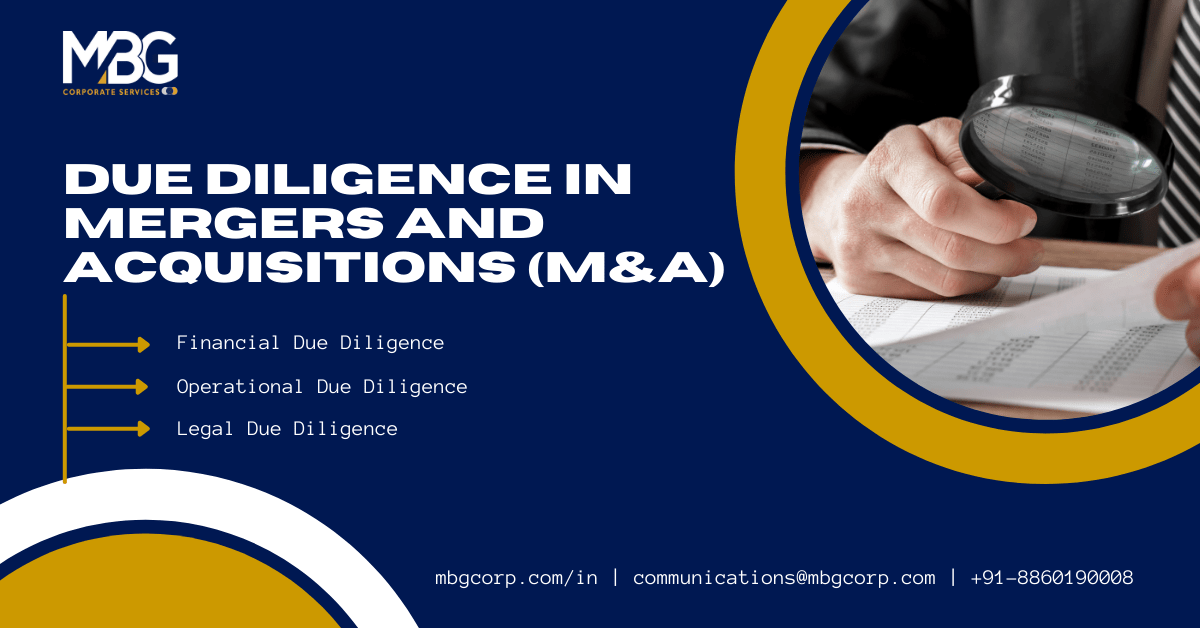Financial Due-Diligence: An Essential and Critical Process
August 03, 2022

“ What is financial due diligence ?”, “ What exactly is ‘financial due diligence services’”?, “How does it differ from general due diligence services?” “How do financial due diligence services help me?” - these are some of the questions we often hear. In this piece we cover these questions, covering what it is but going well beyond the financial due diligence meaning alone.
What is Financial Due Diligence?
So, what is financial due diligence ? Financial due diligence is essentially a review into an organization’s financial performance. It refers to a thorough examination of a company's historical and projected trends to confirm their relevance and veracity. Financial due diligence also seeks to uncover issues that may not be obvious from the financial statements. It is a crucial assessment of the financial health of a business.
No deal or agreement goes through without an adequate process of what is financial due diligence. In fact, financial due diligence is often the most time-consuming part of the process. The following documents and data pertaining to a private limited company or limited company are examined:
- Audited financial statements
- Statements of Financial Position
- Liabilities and assets
- Flows of funds
- Expenditures on capital
- Conceptualization
Financial Due Diligence varies depending on the industry, scale of business, and company size. FDD's primary focus areas are as follows-
- Revenue generation analysis and evaluation of the quality of earnings, cash flows, and margins.
- Revenue sustainability is calculated by considering factors such as taxes, interest, depreciation, working capital, financial debts and liabilities, and projected financial figures.
- Recognizing potential liabilities and commitments
- Other critical variables that may have an impact on the business are being evaluated.
Financial due diligence : Sell-side
Sell-side financial due diligence, also known as sell-side quality of earnings analysis, is a procedure in which a seller hires an independent third-party service provider to conduct a financial due diligence examination on its business from the buyer's perspective. The purpose is to present the company's financial "story" in an easy-to-understand style that can be communicated with potential purchasers. Its purpose is to identify the company's strengths and possibilities, as well as deal-closing roadblocks, such as potential challenges the company has faced, how those issues impacted the company's reported past financial results, and what efforts the management team made to resolve them.
Financial due diligence : Buy-side
Buy-side financial due diligence meaning diligence performed by an acquirer or buyer who intends to buy the target company is the counterpart of the Sell-side diligence. A buyer could be a private equity firm, a venture capitalist, a strategic investor, an investment bank, a family office, a sovereign wealth fund, pension funds, an insurance company, or another entity. The primary focus of buy-side FDD is the target company's financial health. It entails gathering data on the company's revenues, expenses, cash flow, balance sheet, debtors and creditors, profitability, growth rate, and market share, among other things. A buyer interested in acquiring a company or launching a new venture would conduct Buy-side Financial Due Diligence to gain a comprehensive understanding of the target's financial health. The ideal outcome is that the target company's financial position is established as healthy and stable, with a solid forecast ahead, in the acquirer's best interests.
Understanding the importance of financial due diligence
Financial due diligence should be at the core of the due diligence process, because every other element of the business you’re analyzing will affect financial due diligence in some way.
Need investment in operations? That will affect financials.
The company is facing an upcoming legal dispute? That’s likely to cost you.
The target needs new management? Looks like you’re going to be paying redundancy soon.
Thus, whether the due diligence you’re undertaking is operational, legal or human resources, as in the cases above, or any other area of due diligence you conduct or due diligence services you buy into, you must keep costs in mind.
And while the checklist we provide below is strictly concerned with the explicit financial elements of the target company, every kind of due diligence is in some way financial.
The question, ‘what are the hidden costs here?’ is the essence of what the process is all about.
Benefits of Financial Due Diligence
- Identification of potential risks associated with the target company.
- Determining the viability of the acquisition
- Understand the true value of the target company.
- Avoid post-acquisition pitfalls
- Identify the issues that should be addressed before a purchase agreement is signed.
- Ensure that the buyer has enough resources to complete the acquisition.
- Reduce the cost of acquisition.
- Minimize legal costs.
Limitation of Financial Due Diligence
Financial Due Diligence has a few limitations. For starters, what is financial due diligence is not equivalent to an audit conducted in accordance with generally accepted auditing standards. It does not provide assurance of future performance and cannot replace an independent audit.
In addition, FDD is not suitable for small businesses because they do not have access to enough financial data. Small businesses usually use their own accounting software which makes it difficult for them to gather accurate financial data
The Due Diligence Process
Step 1: Examine the company's capitalization - The market capitalization, or total value, of a firm shows how volatile its stock price is, how diverse its ownership is, and the size of its target markets. Large-cap and mega-cap corporations have more reliable revenue streams and a larger, more diverse investor base, resulting in lower volatility. Stock prices and earnings fluctuate more frequently in mid-cap and small-cap companies than in huge corporations.
Step 2: Trends in Revenue, Profit, and Margin - The revenue, net income, or profit of the company will be listed on the income statement. The bottom line is this: It's critical to keep track of a company's revenue, Operational expenses, profit margins, and return on equity over time. The profit margin of a corporation is derived by dividing net income by revenue. To get a sense of perspective, look at profit margin over several quarters or years and compare it to other companies in the same industry.
Step 3: Industry and Competitor Analysis - Now that you know how big the firm is and how much money it makes, it's time to look into the industry it operates in and the competition it faces. Competition shapes a company's identity in part. Comparing a company's profit margins against those of two or three competitors is part of due diligence.
Step 4: Multiples of Valuation - The price-to-earnings (P/E) ratio, the price/earnings-to-growth (PEGs) ratio, and the price-to-sales (P/S) ratio are three of the most helpful ratios and financial indicators used to evaluate organizations. On services like Yahoo! Finance, these ratios are already calculated for you. Compare numerous of a company's competitors while you investigate ratios for it. It's possible that you'll develop a stronger interest in a competitor.
Step 5: Shared Ownership and Management - Due diligence considers if founders and executives own a large percentage of the company's stock and whether they have recently sold shares. Top-level management ownership is a good, but low-level management ownership is a red indicator. Shareholders tend to be best served when those running the company have
Step 5: Shared Ownership and Management - Due diligence considers if founders and executives own a large percentage of the company's stock and whether they have recently sold shares. Top-level management ownership is a good, but low-level management ownership is a red indicator. Shareholders tend to be best served when those running the company have
Step 6: Balance Sheet - The consolidated balance sheet will display the company's assets and liabilities, as well as the amount of cash on hand. Examine the company's debt level and how it stacks up against the competition. Depending on the business strategy and industry, debt isn't always a negative thing. However, make certain that such loans have a high rating from the credit rating agencies. Some businesses and industries, such as oil and gas, require a lot of fixed assets and capital investment, whereas others require very little. To figure out how much positive equity the company has, look at the debt-to-equity ratio. The more cash a company generates, the better an investment it is likely to be, because it can pay off its debts while still expanding.
Step 7: History of Stock Prices - Investors should look at the stock's short- and long-term price movements, as well as if it has been volatile or stable. Examine the earnings earned in the past and see how they correspond to price movements.
Step 8: Options for Stock Dilution - Investors should be aware of the number of outstanding shares and how that number compares to the competitors. Is there any chance that the corporation will issue more stock? If this is the case, the stock price may suffer.
Step 9: Expectations - Investors should research Wall Street analysts' forecasts for earnings growth, revenue, and profit over the next two to three years. Investors should also keep an eye out for talks of long-term industry trends, as well as company-specific news like partnerships, joint ventures, intellectual property, and new products or services.
Step 10: Examine Long and Short-Term Risks - Make sure you're aware of both industry-wide and company-specific threats. Are there any unresolved legal or regulatory issues? Is there a lack of consistency in management? Investors should always play devil's advocate, imagining the worst-case situations and their impact on the stock. How will it affect the company if a new product fails or if a competitor introduces a new and superior product? What impact would a rise in interest rates have on the company? You'll have a better understanding of the company's performance and how it compares to the competition once you've done the stages indicated above. You will have more information to make an informed decision. Keep in mind that past performance is no guarantee of future results. You might not want a fluctuating stock price if you're a retiree seeking for dividends, for example. Stocks with a high level of volatility are more likely to have short-term investors, which can increase the risk for some investors.
The Importance of Financial Due Diligence Services
The preceding section makes the importance of high quality financial due diligence services amply clear. The provider must have competent, high quality teams and the necessary technical / technology resources.
The financial due diligence services team needs to be able to search for many non-obvious elements such as brand value, etc. Secondly, as financial due diligence is rarely, if ever, done alone, the perspective needs to be an integrated one incorporating the other diligence areas such as legal or operational.
Winning with MBG’s Financial Due Diligence services
MBG Corporate Services ensures you get it right with expert and thorough due diligence services across: detailed analyses of the financials – Business Operations Review; Revenue and Receivables Analysis; Cost and Margin Analysis; Fixed Assets Review; Working Capital and Debt Management; Related Party Transactions; Financial Statements Review. Identifying key strengths like sustainable profits and cash flows as well as exposing any potential deal breakers.
Last updated: 03/08/2022
Article contributed by:








